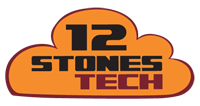
What’s on your computer may not really be your life, but for most of us it is the slideshow or video of our life. Think about all the files you keep on your computer: work files, important personal files such as taxes, pictures of your kids being born and growing up, movies of all the great life events, all your music and whatever else you keep. If you don’t have a good backup plan, you could be sitting there someday sobbing, holding that computer or hard drive like it’s a dead pet. Just like a life being snuffed out, never to return, that is what happens when a hard drive dies.
If you’re like most people, you know you need a backup and may even have some form of backup. However, are you sure if you really needed it that you could count on it being there?
There are several types of backups and each has their good and bad points. The simplest form of backup is an external hard drive connected to your computer via a USB or firewire type connection. With these, you can plug in the external hard drive and copy files over to it whenever you want. Transfers are fairly quick depending on what connection you are using. Some of the external hard drives even come with backup software. Some of these programs will run automatically and backup files. Exactly what is backed up will depend on how well the software is set up. I have seen external hard drives with a whole bunch of directories that are supposedly backups. Without drilling down into each of them, it’s hard to tell what was backed up. If you had to find a lost file, it could be difficult to determine where the file was placed. Overall though, these external hard drives make the process a little simpler, and if you keep the drive connected, offer some kind of automation to the process.


The problem with this type of backup is if you keep the hard drive connected to your computer at all times, it becomes susceptible to accidental deletion and/or virus attacks. This type of backup is only a single drive so it doubles your chances of saving your data in the event of a hardware failure.
The second type of backup is an off-the-shelf NAS (Network Attached Storage) device. These are very similar to the USB connected devices, except that these connect via the network and area available to multiple computers, not just a single one. Some of
some software is OK and some is not-so OK. An NAS can have a single hard drive or multiple drives depending on the type. Most NAS boxes will allow for Windows/MAC/Linux machines to access them. Transfer speeds to a NAS box will depend on your network speed. A hardwired connection utilizing 10/100 megabit speeds is going to get the job done but will take a while. Similarly a wireless connection will get the job done but won’t win any speed records. A gigabit, hardwired system would be the preferred setup allowing backups to occur quickly. Although a NAS is always on, it will be less susceptible to virus attacks occurring on a single computer. Mapped drives though mean deletions are still possible.these also come with backup software with the same caveats that

My personal backup of choice is an actual mini server. Much like an NAS, these devices are attached to the network and are available to any computer on the local network. They can also be made available to remote devices through a web interface. If the mini server has a single hard drive, it will be very similar to the
NAS described above. The difference becomes apparent when second hard drives are added or second servers are added. The second hard drive can be used as a third backup. Files are located on your computer, and then copied to the server. At specific times the server will run a backup of the first hard drive and duplicate the files on the second hard drive. This can be done in a way that the second
All of these solutions are local backups; they work on the local computer or network. The advantage of having your own backup is that it’s yours. Nobody else has your files; you are not reliant on anyone else to keep your files for you. If the internet goes down, you still have your files available. The downside is that no one else has your files so if you don’t do it, no one else will. Offsite backups add protection against the computer and backup being damaged from fire, Mother Nature or vandalism. For a good summary of available services head over here Some of these have free plans but usually only for a very limited amount of space.backup drive will not delete files. In the case of an accidental deletion that goes unnoticed for a while, the first backup process will usually delete the file from the backup; the secondary backup can be set to not delete files so the file can be recovered. The secondary backup is also not a mapped or mounted drive so is inaccessible from computers on the network. This makes these files safer as they can’t be accidentally deleted by your kid playing on your computer. A second server can repeat this process and the server can be located in another part of the home/business or even offsite for protection from fire or theft at the fist site. Offsite backups require a good internet connection.
All of these cloud-based backups will have to run over your internet connection. This means that it can take weeks to get a backup run initially, depending on how much you are backing up. When you are sending files to these services your speed is based on your upload speed not your download speed. For most connections the upload speed is much slower than what you get for downloading. If you routinely add a lot of photos or even video, then you better have a good upload speed or it could be days to backup your new files, even after the initial upload. If you look at one of these, be sure that they meet your needs. Some won’t allow for backing up an attached device; some will only allow a single computer. You just have to be sure you get what you need.
Depending on what you have to backup, some combination of the discussed methods is probably what’s right for you. Having an offsite backup for some files is probably a prudent thing to do, but the cost and speed can be prohibitive if your backup is large.
